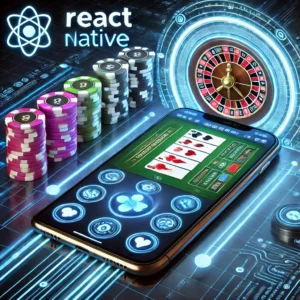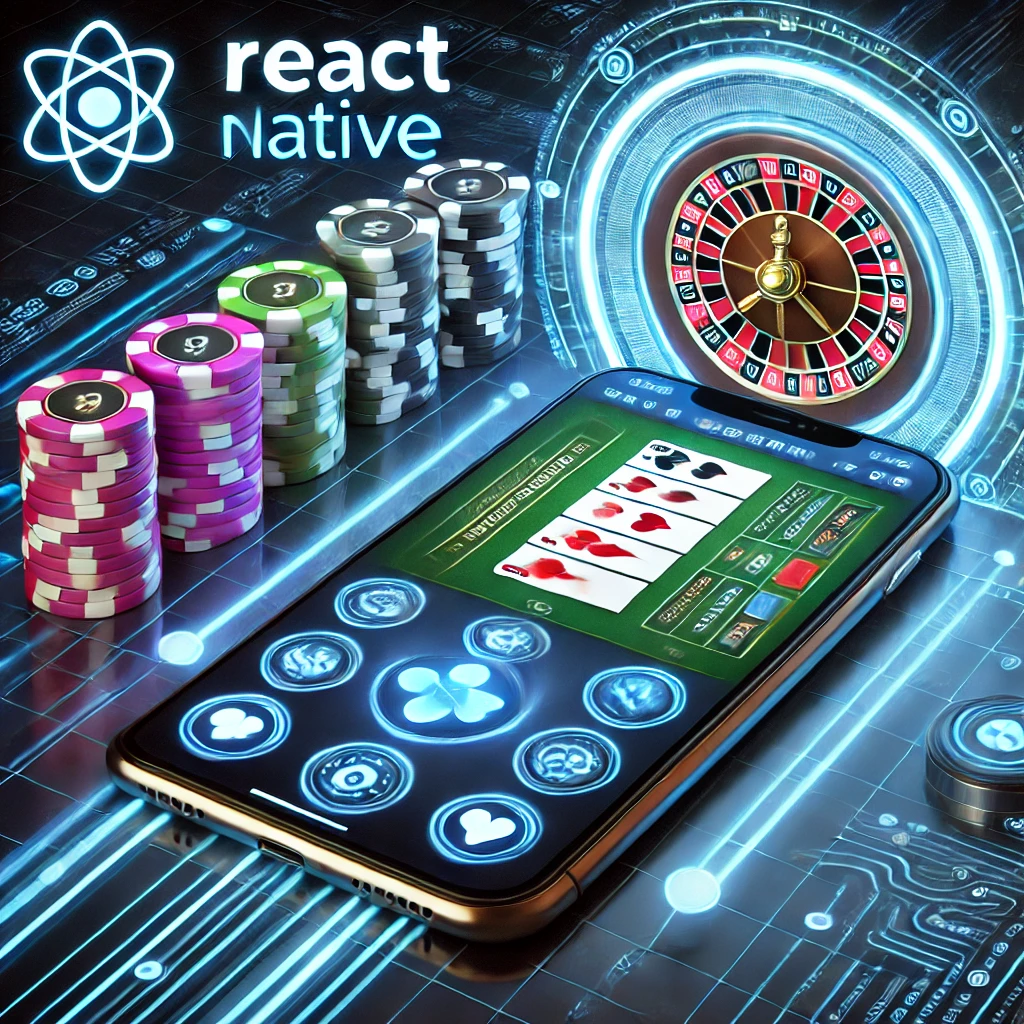Introduction
At DGClub.io, we strive to offer players a seamless and entertaining gambling experience. As a newcomer in the online gaming space, our focus is on delivering performance, reliability, and an exceptional user experience.
By 2025, we moved our mobile app to React Native — it was a steep learning curve with constant optimizations, but we successfully migrated our entire front-end from native technologies to React Native. This transformation improved development efficiency, sped up feature rollouts, and increased capabilities.
This post explains why we picked React Native over other cross-platform options, how we tackled migration challenges, and what it means for our platform.
Why React Native?
Cross-platform frameworks like React Native, Flutter, and Kotlin Multi-Platform offer device uniformity, reduced development time, and enhanced efficiency. React Native stood out for DGClub.io for a few key reasons.
Access to a Larger Talent Pool
Finding skilled developers is challenging, especially in the fast-growing online gambling industry. React Native opened up access to a wider pool of JavaScript and TypeScript developers, allowing us to scale our engineering team quickly.
Seamless Integration with Our Existing Tech Stack
We already use TypeScript for various parts of our platform, including backend services and API layers. React Native’s native TypeScript support allowed for a smoother transition and enabled us to leverage our existing knowledge base.
Faster Development & Maintenance
Maintaining separate iOS and Android codebases required additional resources and slowed down feature development. With React Native, we unified our codebase, eliminating duplication and accelerating development cycles.
Faster Updates with Over-the-Air Deployment
React Native allows us to roll out fixes and new features through over-the-air (OTA) updates, eliminating the need for app store approvals. This enables faster iteration and is crucial in the online gambling industry, where timely updates are essential.
The Migration Strategy – From Native to React Native
Moving a popular gambling platform was a complex process. We followed a structured approach to minimize risks and ensure a seamless transition.
Proof of Concept (POC)
We introduced React Native in a hybrid setup where native and React Native code coexisted. This allowed us to test performance, stability, and user acceptance before committing to a full migration.
Training & Onboarding
To smooth the transition, we conducted internal training sessions for our native developers, helping them get familiar with React Native. This accelerated adoption across teams.
Full-Scale Migration
Instead of a gradual migration, which would have required maintaining two separate codebases, we pursued an aggressive migration plan to complete the transition before a critical business deadline.
Testing & Optimization
We rigorously tested each feature to ensure performance was on par with our previous native implementation. Additionally, we optimized app efficiency by:
- Reducing unnecessary re-renders.
- Utilizing the Hermes engine for improved speed.
- Optimizing animations and UI updates to enhance responsiveness.
Overcoming Challenges & Key Learnings
Performance Optimization
React Native introduces overhead compared to native development, which can impact performance during high-frequency interactions. To address this, we:
- Used memoization techniques to reduce unnecessary re-renders.
- Implemented lightweight custom components for real-time updates like timers and animations.
- Deferred certain initializations to improve startup time.
- Optimized long lists and dynamic content rendering to reduce UI lag.
Real-Time Benchmarking & Monitoring
“You can only optimize what you can measure.”
To ensure the best performance, we built an internal benchmarking system that tracked:
- Load times
- Frame rates
- CPU and memory consumption
- Network efficiency
By continuously monitoring these metrics, we were able to quickly identify and resolve performance bottlenecks.
Stability & Crash Management
One of the biggest challenges with React Native was handling platform-specific crashes and inconsistencies. To mitigate this, we:
- Implemented robust error logging and crash monitoring tools.
- Worked closely with the React Native open-source community to address critical issues.
- Maintained a rollback option to revert to native implementations when necessary.
The Impact of React Native on DGClub.io
Faster Feature Deployment
By consolidating into a single codebase, we drastically reduced our development cycle times—features that previously took weeks to release can now be deployed in days.
Streamlined Hiring & Team Growth
Since switching to React Native, we have expanded our development team rapidly. It is significantly easier to hire JavaScript developers than to find specialized iOS and Android engineers.
Cost Savings & Efficiency
Maintaining a single React Native codebase has lowered maintenance costs and reduced engineering efforts. This allows us to focus more on innovation rather than managing redundant development across multiple platforms.
Improved User Experience & Stability
Despite initial setbacks, continuous optimizations have ensured that our React Native-powered app now performs as well as or better than our previous native version.
- Load times have improved.
- Crash rates have significantly decreased.
The Future of React Native at DGClub.io
Our transition to React Native has been a game-changer. Looking ahead, we aim to:
Optimize Performance Even Further
As React Native’s architecture evolves, we will continue fine-tuning our app for enhanced speed and efficiency.
Engage with the Open-Source Community
We plan to contribute back to the React Native ecosystem by sharing our learnings, collaborating with other developers, and enhancing community-driven solutions.
AI & Machine Learning Integrations
Leveraging React Native’s capabilities, we will integrate AI-powered personalization and recommendation engines to improve user engagement and retention.
Conclusion
Migrating to React Native was a bold and challenging decision for DGClub.io. Although we faced initial obstacles, the long-term benefits—including improved scalability, development efficiency, and user experience—proved well worth the effort.
For gambling platforms and gaming businesses looking to streamline development while maintaining high performance, React Native is a powerful choice.
Stay tuned for more updates as we continue refining and innovating our platform!
For more information, visit DGClub.io.
Best plateform dgclub don’t miss

